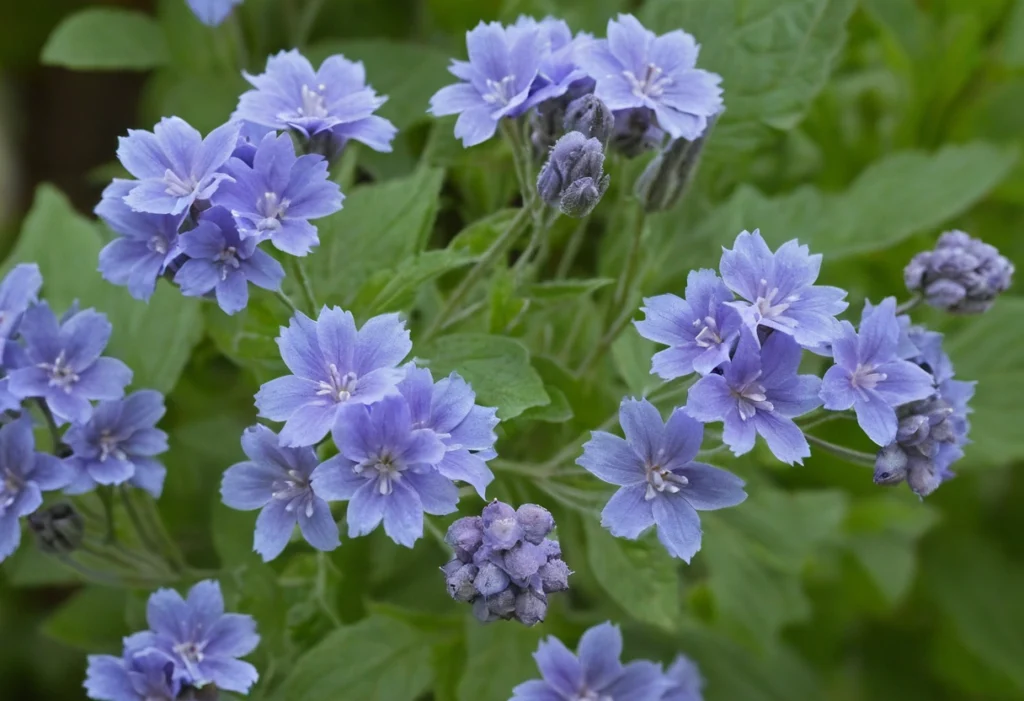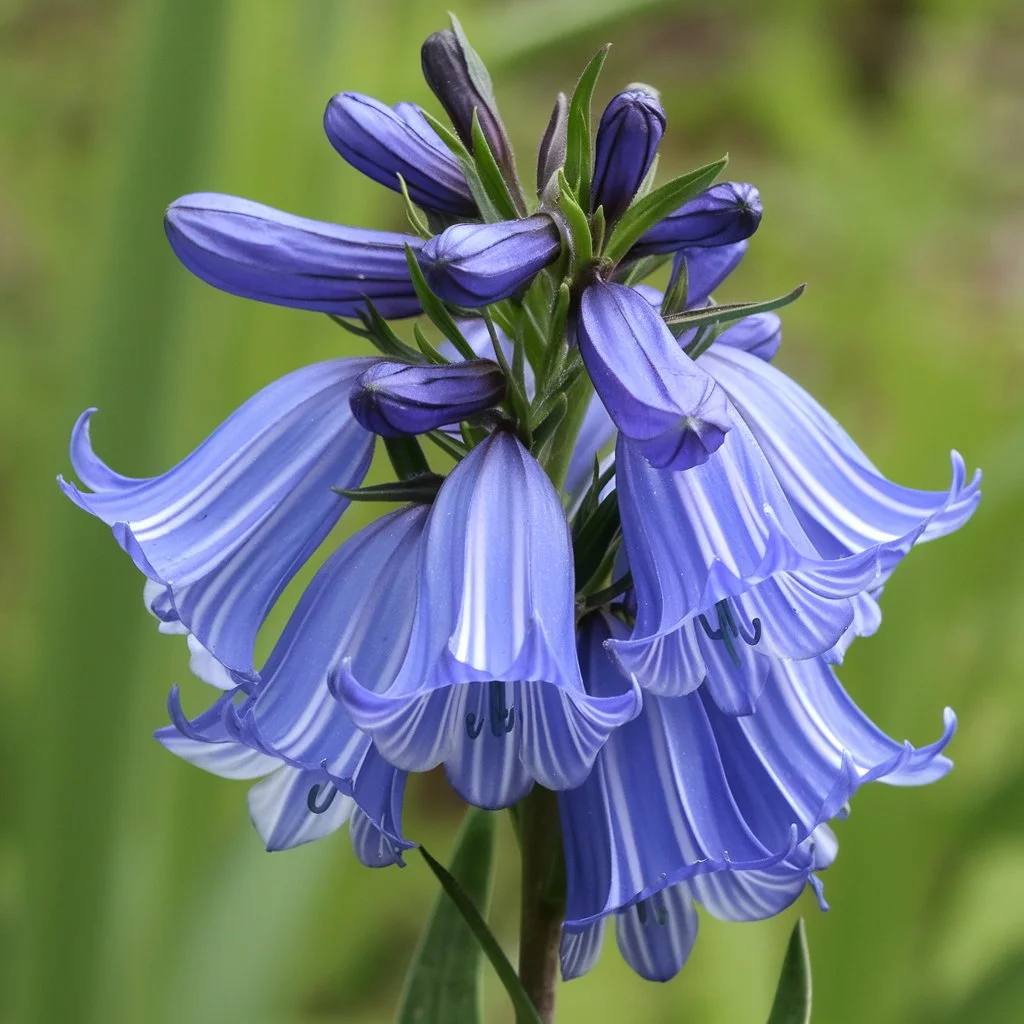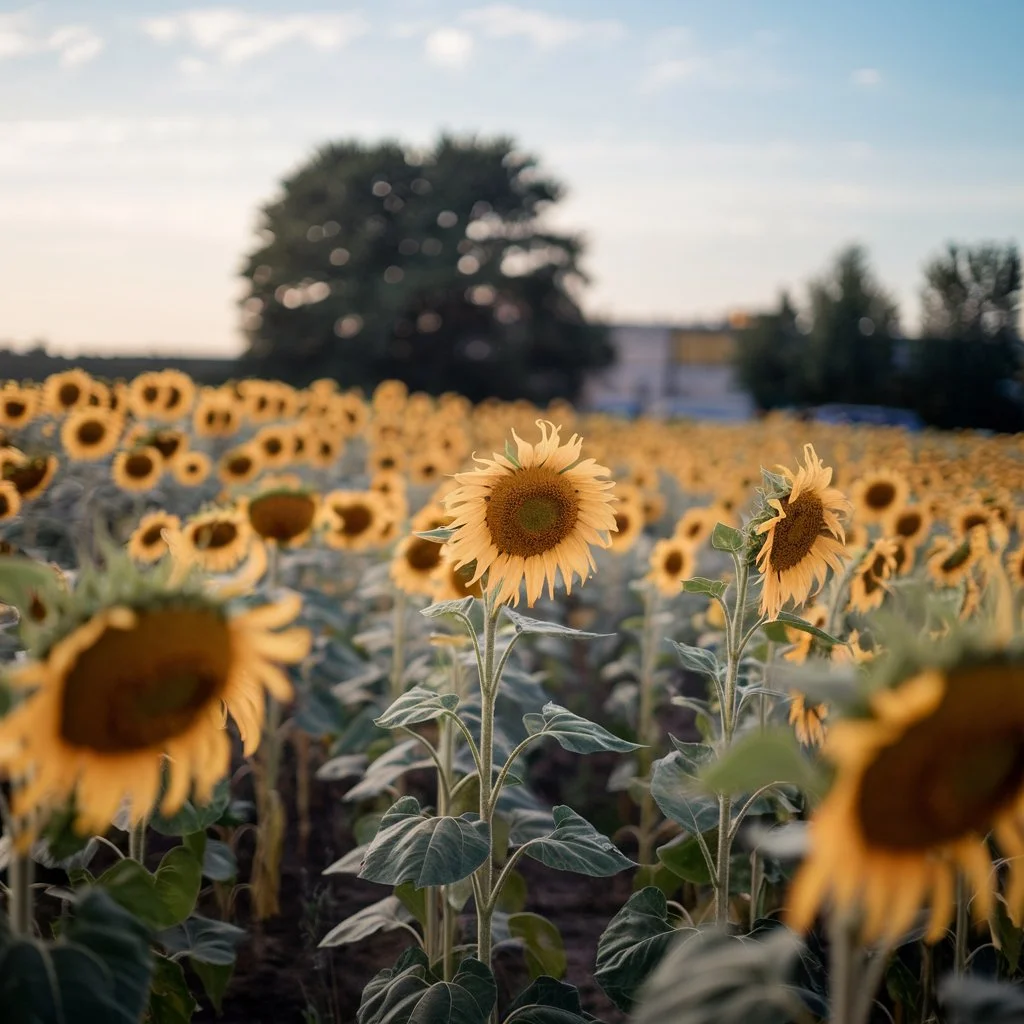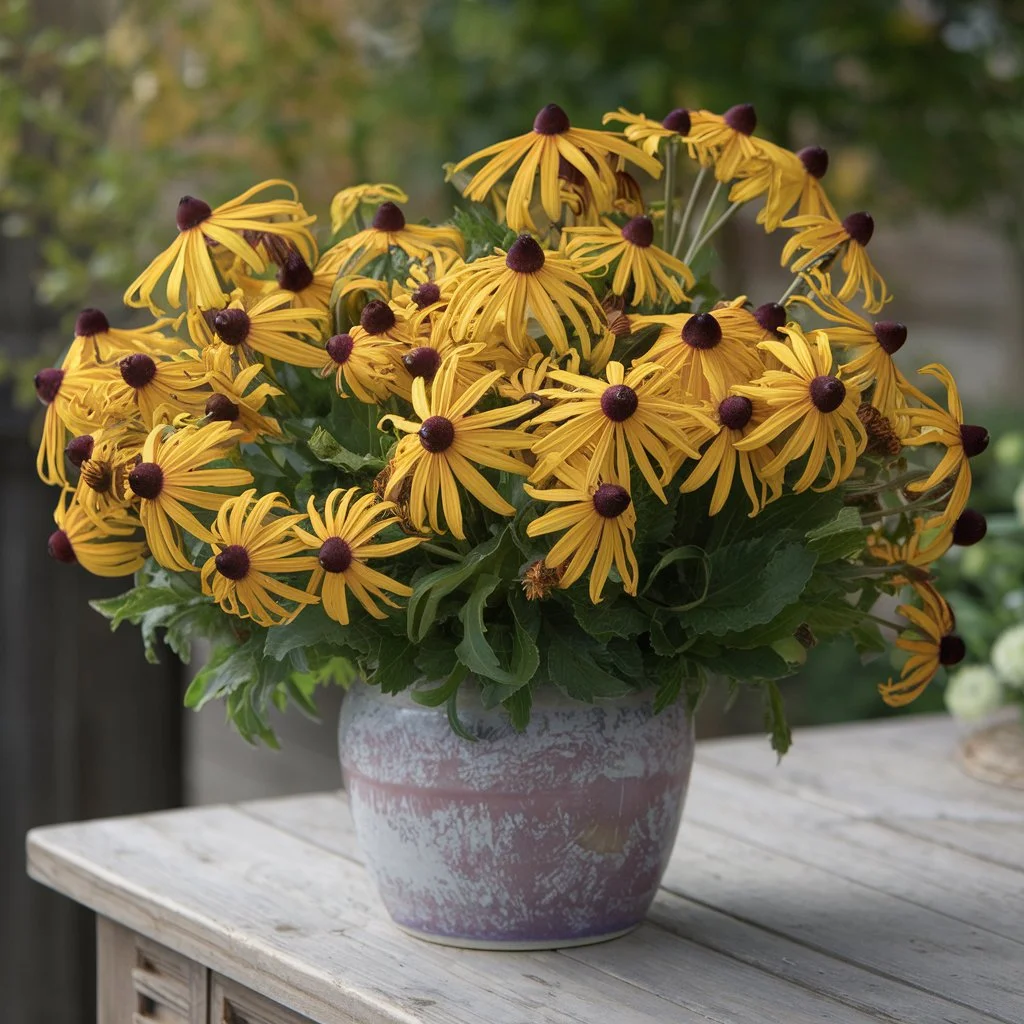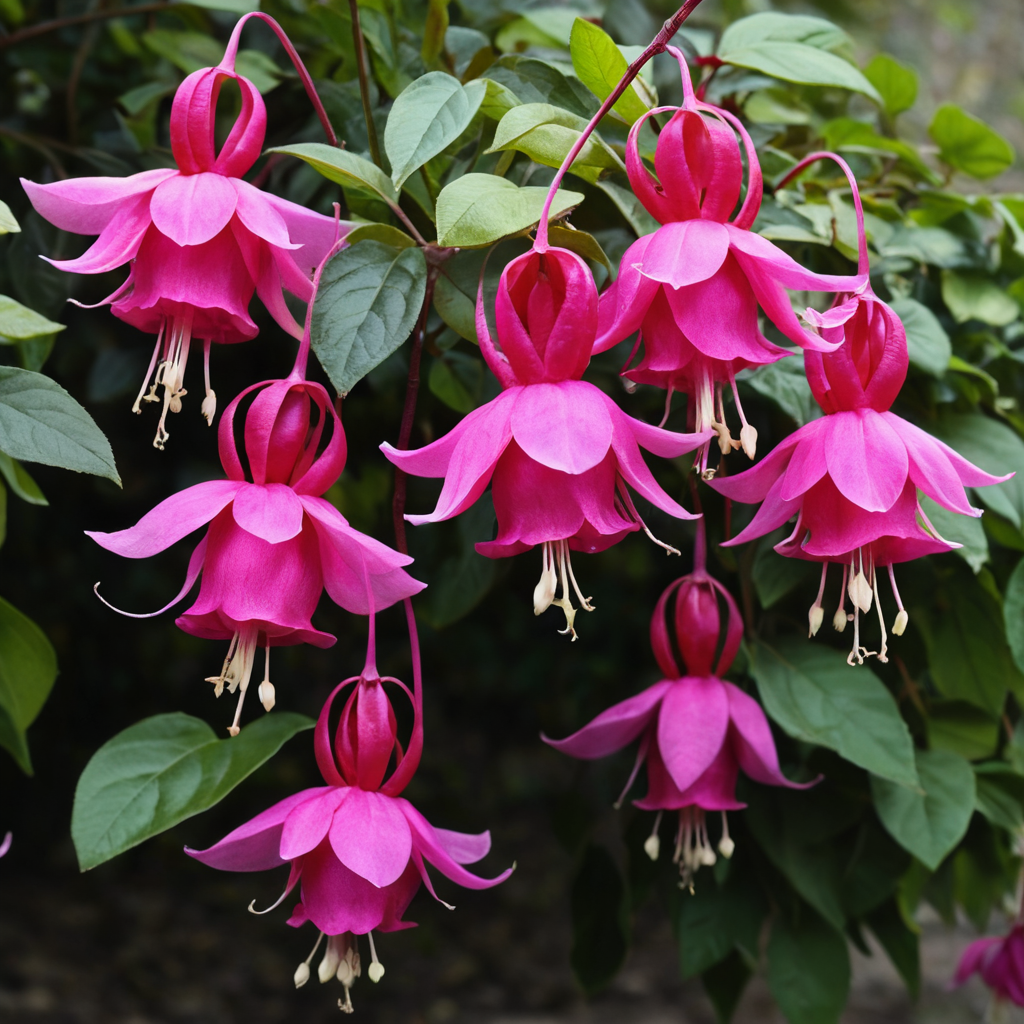Introduction
Ready to add a touch of magic to your garden? Meet the Blue Mist Flower, a perennial beauty that’s as easy to grow as it is enchanting. With its soft lavender-blue blooms and butterfly-magnet powers, this flower is the ultimate showstopper for anyone craving a splash of color and life in their outdoor space.
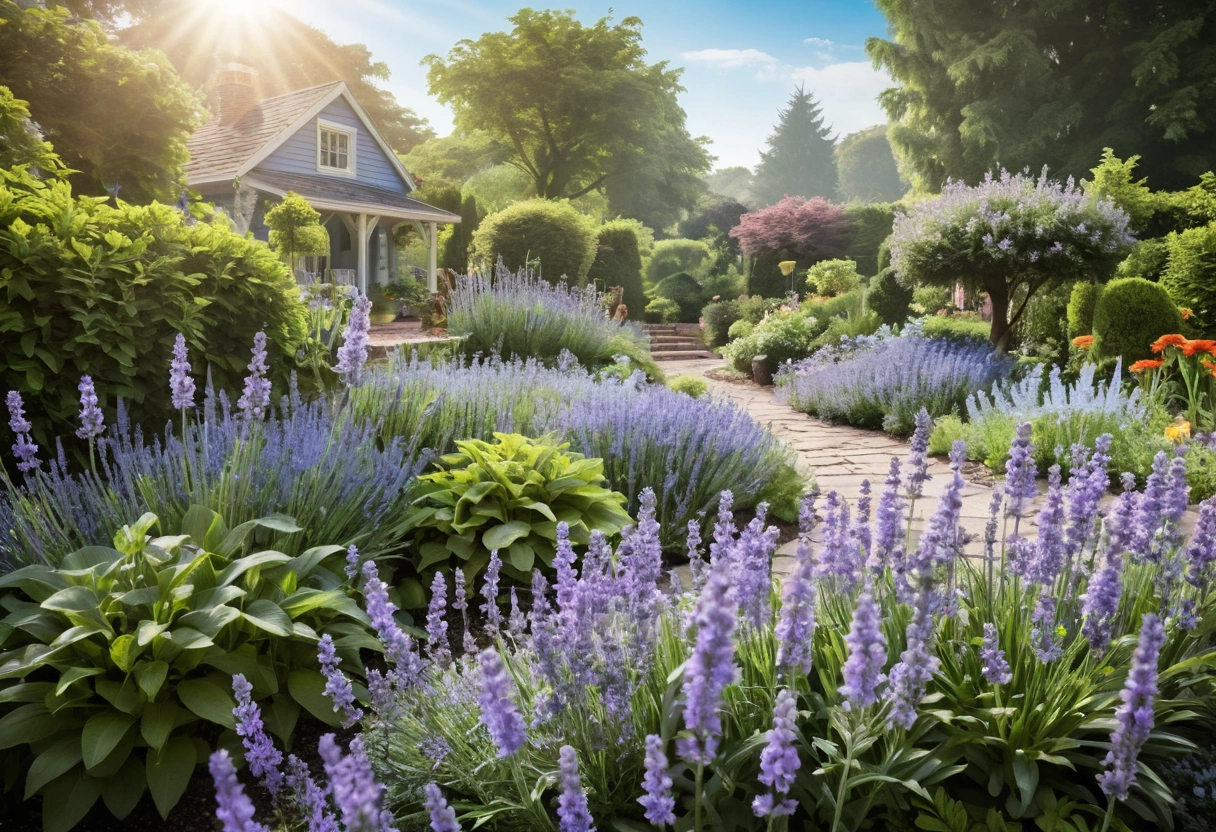
But here’s the thing: while the Blue Mist Flower is fairly low-maintenance, there are a few secrets to unlocking its full potential—secrets we’re about to spill! 🌸 From picking the perfect spot to mastering its care routine, we’ve got everything you need to make your Blue Mist Flower thrive and dazzle.
Curious? Good! Stick around because we’re about to transform your garden into a blooming paradise. Let’s dig in (pun absolutely intended). 😉
Understanding the Blue Mist Flower
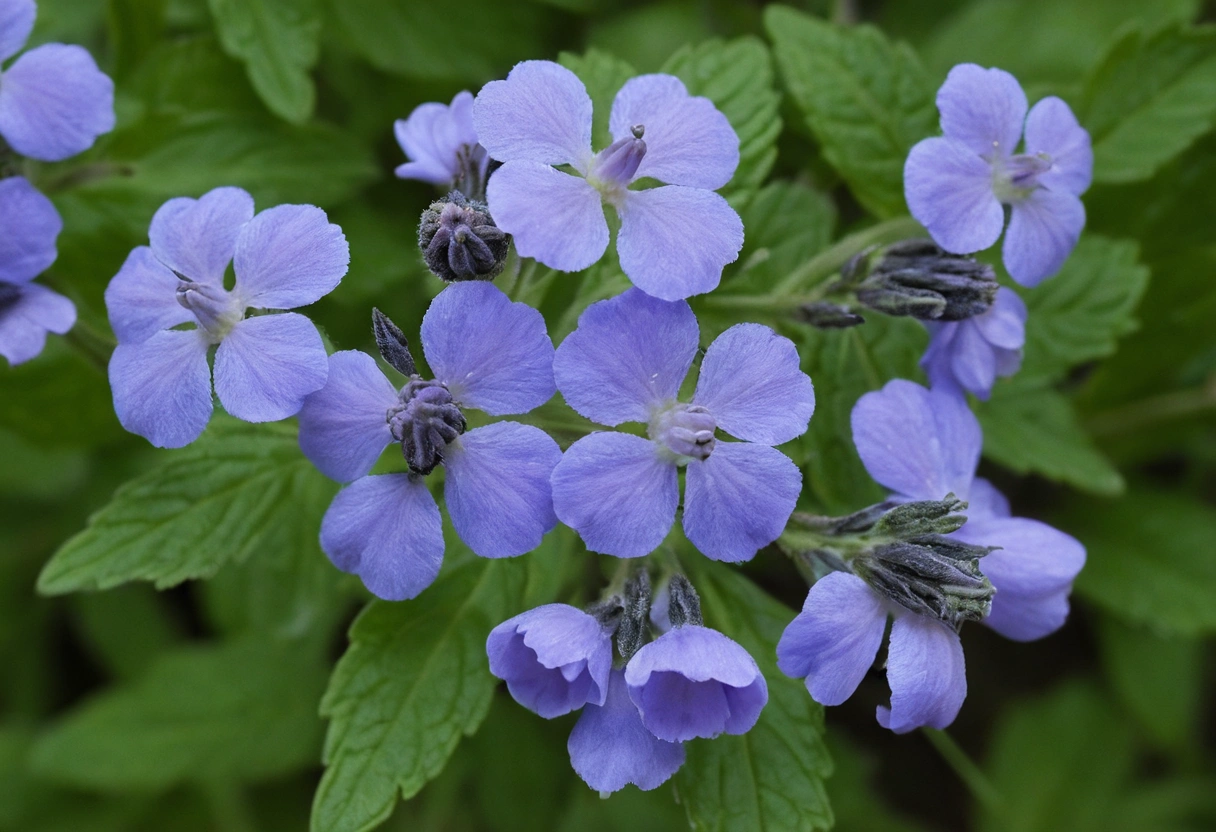
What is the Blue Mist Flower?
The Blue Mist Flower (Conoclinium coelestinum), also known as wild ageratum or hardy ageratum, is a perennial wildflower that captivates gardeners with its delicate charm. Native to North America, this plant is a favorite for its dreamy, cloud-like blooms and its ability to attract beneficial pollinators. It’s not just beautiful—it’s a garden workhorse that’s as easy to grow as it is rewarding.
Here’s a deeper dive into what makes this plant special:
- Color: The Blue Mist Flower produces clusters of soft lavender-blue flowers, giving it a misty, ethereal appearance. These blooms stand out beautifully against the lush green foliage.
- Height: Typically reaching between 2 and 3 feet, it’s the perfect mid-level plant for creating layers of interest in your garden beds.
- Blooming Season: This plant is a late-season hero, blooming from late summer through fall, when other plants are starting to fade. Its timing makes it a critical nectar source for late-season pollinators.
The Blue Mist Flower isn’t just a pretty face; it’s a versatile, reliable addition to any garden that brings color, texture, and life to your outdoor space.
Why Choose the Blue Mist Flower for Your Garden?
If you’re wondering whether the Blue Mist Flower deserves a spot in your garden, the answer is a resounding yes! Here’s why:
- Pollinator Magnet: The nectar-rich blooms are irresistible to bees, butterflies, and even hummingbirds. Plant it, and your garden will become a bustling hub of pollinator activity, which is great for the environment.
- Low Maintenance: Don’t have hours to spend tending to your garden? No problem. The Blue Mist Flower is a hardy, self-sufficient plant that thrives with minimal care. It’s perfect for beginners or anyone who loves a beautiful yet fuss-free garden.
- Eco-Friendly and Native Appeal: As a North American native, the Blue Mist Flower is adapted to local climates and ecosystems, making it an environmentally friendly choice. Native plants like this support biodiversity and reduce the need for excessive watering, fertilizers, or pest control.
Not only does it offer these benefits, but it also integrates seamlessly into a variety of garden designs, from formal landscapes to relaxed, naturalistic styles.
USDA Hardiness Zones and Climate Requirements
While the Blue Mist Flower is adaptable, it does have some preferences to help it truly thrive:
- Hardiness Zones: The Blue Mist Flower is hardy in USDA Zones 5–10, making it a versatile choice for many regions across North America. Whether you’re dealing with chilly northern winters or balmy southern climates, this plant is up for the challenge.
- Optimal Climate: This plant enjoys warm, sunny days, but it’s versatile enough to handle partial shade, especially in hotter climates. The key to success is finding a location with well-drained soil, as it dislikes soggy conditions that can lead to root problems.
- Soil Preferences: While it isn’t overly picky, the Blue Mist Flower performs best in loamy or sandy soils. A little compost or organic matter can go a long way in improving its growth.
By choosing the right spot and understanding its climate needs, you’ll set the stage for your Blue Mist Flower to flourish. Imagine it standing tall, swaying gently in the breeze, and drawing butterflies to its blooms—it’s a sight that never gets old.
With its stunning blooms, pollinator appeal, and carefree nature, the Blue Mist Flower is a plant that every gardener should consider. Ready to roll up your sleeves and make it a star in your garden? The next section will tell you everything you need to know about planting and caring for this beauty! 🌸
How to Grow Blue Mist Flower
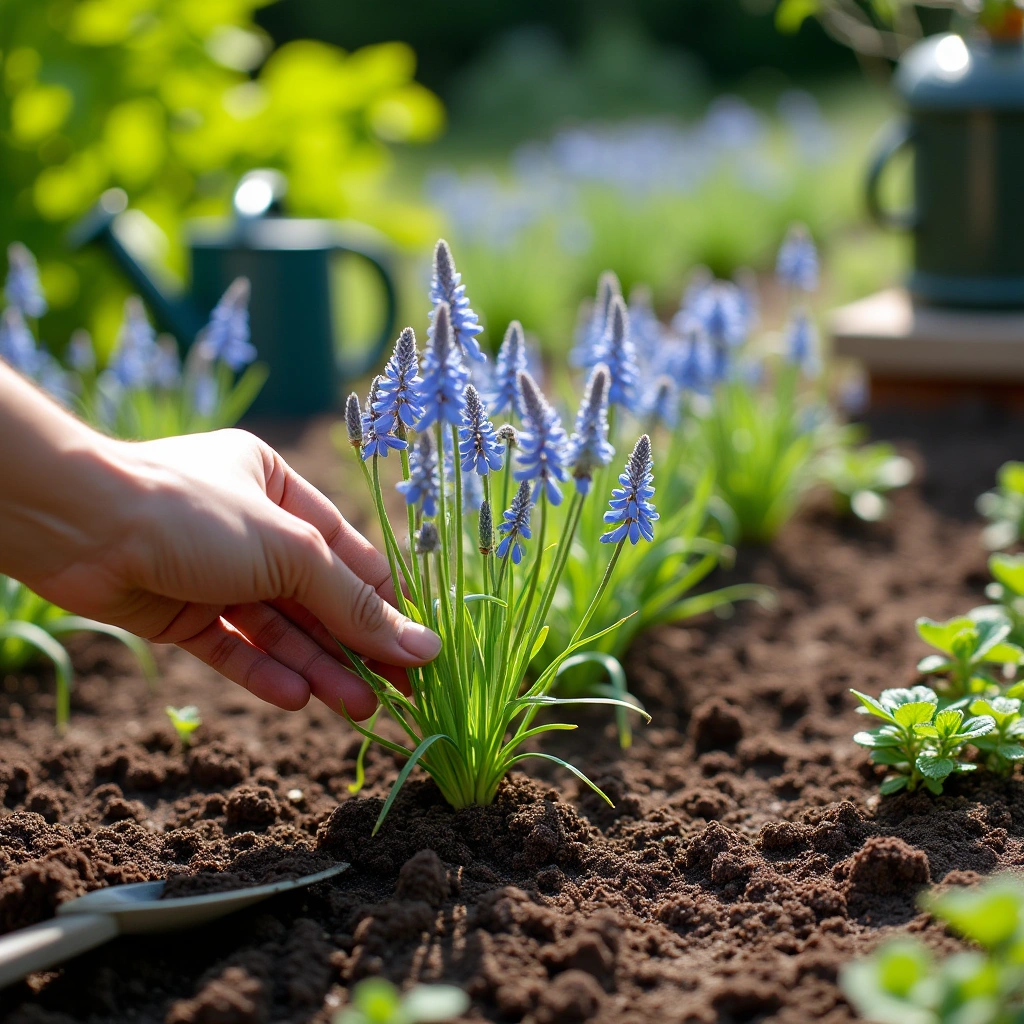
Growing the Blue Mist Flower is as satisfying as it is simple. With the right spot and a little TLC, this plant will reward you with vibrant blooms and a garden buzzing with life. Here’s how to get started!
Selecting the Right Location
Choosing the perfect spot for your Blue Mist Flower is half the battle, and thankfully, it’s not too picky!
- Sunlight Requirements: The Blue Mist Flower thrives in full sun but can tolerate partial shade, especially in regions with intense afternoon heat. If you’re in a warmer climate, consider a spot that gets morning sun and a bit of afternoon shade for happy blooms.
- Companion Planting Ideas: Pair your Blue Mist Flower with other pollinator favorites like coneflowers, milkweed, or bee balm for a stunning and eco-friendly garden design. This plant also works well as a filler in mixed borders or alongside ornamental grasses for a relaxed, natural look.
Soil and Watering Needs
While the Blue Mist Flower isn’t fussy, giving it the right foundation will help it truly thrive.
- Preferred Soil Type: This plant loves well-draining, loamy soil but can adapt to sandy or slightly clayey conditions. The key is to avoid waterlogged areas, as soggy roots are a big no-no.
- Improving Soil Quality: If your soil needs a little help, mix in some compost or organic matter before planting. This boosts drainage while providing nutrients for healthy growth.
- Watering Tips: Keep the soil evenly moist, especially during the plant’s early growth stages. Once established, the Blue Mist Flower can tolerate short dry spells, but it still appreciates a consistent watering routine. Pro tip: Use mulch around the base to retain moisture and regulate soil temperature.
Planting Blue Mist Flower
Whether you’re starting from seeds or dividing an existing plant, the Blue Mist Flower is easy to get growing.
- From Seeds:
- Sow seeds directly into the garden in spring, after the danger of frost has passed.
- Press seeds lightly into the soil but don’t cover them completely; they need light to germinate.
- Water gently and keep the soil moist until seedlings emerge in about 1–2 weeks.
- From Division:
- In early spring or fall, dig up an established plant and gently separate its clumps, ensuring each has roots attached.
- Replant the divisions about 12–18 inches apart to give them room to spread.
- Water thoroughly after planting to help the divisions settle in.
Whichever method you choose, your Blue Mist Flower will establish quickly and begin growing like a pro!
Fertilizer and Feeding Recommendations
To keep your Blue Mist Flower producing those gorgeous blooms, a little feeding goes a long way.
- When to Fertilize: Feed your plant in early spring as new growth begins and again in midsummer to support blooming.
- What to Use: A balanced, slow-release fertilizer (10-10-10) works wonders. Alternatively, compost or well-rotted manure is an excellent organic option for enriching the soil.
- How to Apply: Sprinkle fertilizer around the base of the plant (not directly on the stems) and water it in well. Be careful not to over-fertilize—too much can lead to leggy growth and fewer flowers.
With the right care, your Blue Mist Flower will flourish, adding color and charm to your garden while giving pollinators a reason to celebrate. Ready to keep your blooms thriving all season? Let’s move on to maintenance tips! 🌸
Caring for Your Blue Mist Flower
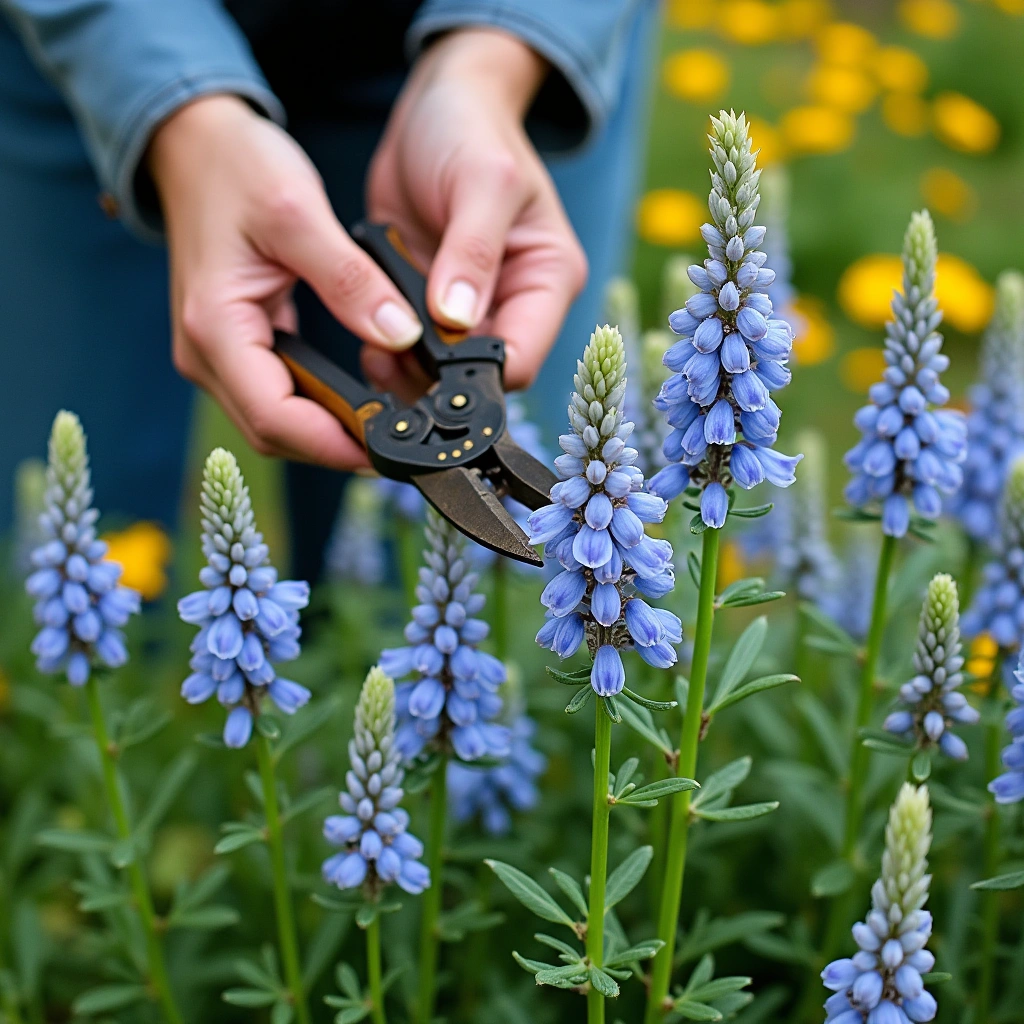
Caring for your Blue Mist Flower is a breeze once you know the right techniques. With just a little attention, you’ll have a garden full of vibrant blooms and healthy, buzzing pollinators. Let’s dive into some essential care tips to keep your Blue Mist Flower looking its best all season long!
Watering and Mulching Tips
When it comes to watering your Blue Mist Flower, consistency is key:
- Proper Watering Schedule: The Blue Mist Flower enjoys consistent moisture, especially when it’s newly planted or during dry spells. However, it’s important to avoid waterlogging. A good rule of thumb is to water deeply but less frequently, allowing the soil to dry slightly between waterings. This ensures the plant’s roots remain healthy and strong.
- Benefits of Mulching: Mulching around your Blue Mist Flower not only helps retain soil moisture but also regulates soil temperature and keeps weeds at bay. Use organic materials like wood chips or shredded leaves to mulch your plant—this will keep the soil cool and moist, and your Gregg’s Blue Mist Flower will thank you!
Pruning and Maintenance
Pruning your Blue Mist Flower helps promote strong growth and more blooms. Here’s how to keep your plant looking its best:
- Best Times and Techniques for Pruning:
- Prune your Blue Mist Flower in early spring before new growth starts to encourage bushy, healthy growth.
- During the blooming season, deadhead spent flowers regularly to prevent the plant from focusing on seed production and to encourage more blooms.
- If your Blue Mist Flower becomes too leggy or overgrown, you can trim back the stems in late fall after the plant has finished flowering. This helps maintain a tidy shape and encourages a fuller growth next season.
- Encouraging Healthy Growth and More Blooms: To maximize the Blue Mist Flower height and flower production, make sure to fertilize your plant regularly (as mentioned earlier) and remove any dead or damaged growth. The more you care for it, the more it’ll reward you with stunning clusters of blue mist-like flowers.
Pest and Disease Management
Like all plants, your Blue Mist Flower may occasionally face pests or diseases. Here’s what to watch for and how to handle them:
- Common Issues:
- Powdery Mildew: This fungal disease can occasionally affect Blue Mist Flower, especially during humid conditions. To prevent it, avoid overhead watering and ensure the plant has good air circulation. If powdery mildew appears, remove affected leaves and treat with an eco-friendly fungicide.
- Aphids: These tiny pests can sometimes infest Blue Mist Flower plants, particularly in the early summer. They suck sap from the plant, weakening it. You can control aphids by spraying the plant with a mixture of water and dish soap or using insecticidal soap.
- Eco-friendly Solutions for Pest Control:
- If you’re looking for a natural way to deter pests, try introducing ladybugs, which are natural predators of aphids.
- Neem oil is another great, organic option to deter pests and prevent disease without harming beneficial insects.
By staying on top of these potential issues, your Blue Mist Flower will thrive and continue to attract pollinators all season long.
Whether you’re growing from Blue Mist Flower seeds or a young plant, maintaining it with regular watering, mulching, and pest management will keep it healthy and blooming year after year. Enjoy watching your Blue Mist Flower flourish, and don’t forget—this little beauty also offers a range of medicinal uses as well. But we’ll get into that later! 🌸
Creative Uses and Landscaping Ideas
The Blue Mist Flower isn’t just a beautiful addition to your garden—it’s versatile and can be used in a variety of ways to enhance your landscape. Whether you’re aiming to attract more pollinators or looking for the perfect plant for small spaces, the Blue Mist Flower has something to offer. Let’s explore some creative ways to use this stunning plant!
Designing a Pollinator-Friendly Garden
If you want to transform your garden into a haven for bees, butterflies, and other pollinators, the Blue Mist Flower should be at the top of your list!
- Combining Blue Mist Flowers with Other Pollinator-Attracting Plants: Pair your Gregg’s Blue Mist Flower with other favorites like lavender, black-eyed susans, and bee balm to create a diverse and vibrant pollinator-friendly garden. These plants not only look great together but also provide food and shelter for various pollinators throughout the seasons.
- Creating Visually Appealing Garden Layouts: The Blue Mist Flower is perfect for mixed borders and flower beds. Its soft blue hue complements both warm-toned flowers like sunflowers and cooler-toned ones like salvia. For a more natural look, plant it in drifts or groupings to mimic wildflower meadows.
By creating a landscape that nurtures pollinators, you’re helping the environment while adding beauty to your garden. It’s a win-win!
Seasonal Color and Aesthetic Appeal
The Blue Mist Flower isn’t just a pretty face—it offers long-lasting aesthetic value throughout the year, especially in the fall when it shines the brightest.
- How the Blue Mist Flower Enhances Fall Garden Colors: As summer fades, the Blue Mist Flower blooms from late summer to fall, adding a pop of lavender-blue just when you need it most. Its misty, delicate flowers contrast beautifully with the deep reds, oranges, and yellows of autumn foliage, creating a colorful, textured garden.
- Using It as a Border or Focal Point in Your Landscape: Whether planted in rows as a border or showcased as a focal point in the center of a flower bed, the Blue Mist Flower commands attention. Its gentle, cloud-like blooms are eye-catching, yet they also work in harmony with other plants. The Blue Mist Flower height—2 to 3 feet—makes it a perfect mid-level plant that can complement taller blooms like sunflowers or black-eyed susans.
Growing in Containers and Small Spaces
Don’t have a large garden? No problem! The Blue Mist Flower is an excellent choice for small spaces or even containers.
- Tips for Cultivating Blue Mist Flower in Pots: Growing Blue Mist Flower seeds in containers is a fantastic option for those with limited garden space. Choose a large pot with good drainage to give the plant enough room to grow. Use a well-draining potting mix, and be sure to place the container in a sunny spot. Regular watering will keep your potted plant happy, but make sure the soil doesn’t stay too wet.
- Ideal Settings for Balcony or Patio Gardens: The Blue Mist Flower makes a stunning addition to balcony gardens or patios, where its gentle blooms can brighten up small spaces. Plant it alongside other compact plants like petunias or geraniums, or use it as an accent piece in a container garden. Its ability to thrive in partial shade makes it perfect for spots that don’t get full sun all day.
With its low-maintenance nature and stunning visual appeal, the Blue Mist Flower is perfect for almost any space. Whether you’re planting in the ground, creating a pollinator-friendly paradise, or cultivating in containers, this plant can elevate your landscape in so many creative ways. Ready to start designing your dream garden with the Blue Mist Flower? The possibilities are endless! 🌸
Conclusion: Embrace the Beauty of the Blue Mist Flower
And there you have it! Whether you’re looking to enhance your garden with stunning color, create a haven for pollinators, or simply enjoy a low-maintenance yet beautiful plant, the Blue Mist Flower (Conoclinium coelestinum) is a perfect choice. With its soft lavender-blue blooms, easy care, and eco-friendly benefits, this plant will quickly become a favorite in your garden.
From selecting the right location and caring for your Gregg’s Blue Mist Flower to incorporating it into creative landscape designs, we’ve covered everything you need to make this flower a star in your garden. Plus, with its medicinal uses and ability to thrive in a variety of climates, the Blue Mist Flower truly offers something for everyone.
So, what are you waiting for? Whether you’re planting from Blue Mist Flower seeds or dividing an existing plant, it’s time to bring this charming flower into your garden and enjoy the stunning blooms that will attract bees, butterflies, and all the good things nature has to offer. Happy gardening! 🌸
Check out our latest article for more insights, and follow us on Facebook for updates! and connect with us on Instagram, Pinterest, and YouTube for more inspiration!

